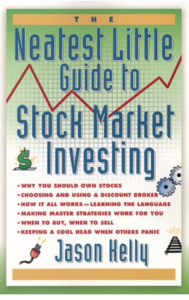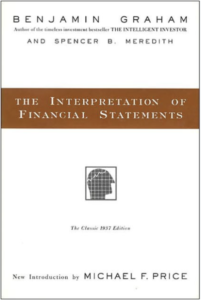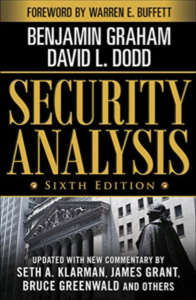So, you’ve just discovered Ben Graham, and you’re wondering whether it’s worth reading Benjamin Graham’s Security Analysis.
It’s a solid question. There are 7 editions of the book out today, written over the course of 100 years, and each one of them is a real tome. Reading a copy is a real commitment.
So, is it worth it today?
In this comprehensive review, I’m going to walk you through the book, its core lessons, and its relevance to contemporary investing, and in the end, you’ll have a clear understanding of whether you should pick up the book or not.
Table of Contents

Ben Graham Security Analysis: Is Security Analysis Still Worth Reading?
Yes, Ben Graham’s Security Analysis is very much worth reading today if you haven’t done so already. Benjamin Graham and David Dodd forever changed the theory and practice of investing, and Benjamin Graham is considered the godfather of security analysis & value investing, so Graham’s Security Analysis is a must read for any serious investor.
Graham’s Security Analysis is a very comprehensive work covering a value investor’s approach to stock investing and bond investing. It’s quite comprehensive. While it does not include things like stock or commodity futures, stock options, and warrants, it provides a very solid and detailed discussion of stock and bond investing.
Reading any version of Security Analysis will really improve your understanding of value investing, how Graham thought, and how to apply the strategy to your investing today.
Can a Beginner Read Security Analysis?
Yes, a beginner can read security analysis, but it does presuppose some basic background knowledge when it comes to the difference between stocks and bonds, and financial statements.
Security Analysis was a textbook that Graham wrote for his security analysis class at Columbia University in New York. It was a university class, and people who attended it were typically already in a financial profession. So, Graham didn’t spend any time in the book introducing his students to the concepts of stock ownership, the difference between common and preferred shares, or various types of debt instruments. Instead, he focused on how to analyze these instruments to see if they were worthwhile investments.
What to Read Before Reading Benjamin Graham’s Security Analysis

If you’re new to investing and looking at reading Graham’s Security Analysis, then there are two books that I think you should pick up before Security Analysis.
The first is Jason Kelly’s 1998 book “The Neatest Little Guide to Stock Market Investing,” which is a very good introduction to investing for complete beginners. It covers every core concept and ratio that you should know, as well as the differences between various financial statements, and introduces you to a number of great investors.

The second book you should read is Benjamin Graham’s The Interpretation of Financial Statements. This is a classic that walks you through each section of the financial statements and how Graham approached them. Yes, it was written a long time ago and yes, accounting has changed a lot since, but I found it surprisingly relevant to what I do as an investor today. In short, it’s a great overview of accounting for investing that is still directly relevant today.
Don’t go out of your way to spend a lot of money on this book because you can find PDF copies online to download for free.
These two books will give you the prerequisite knowledge that you need to be able to get the most out of Ben Graham’s Security Analysis.
How Long Does it Take to Read Security Analysis?
A strong reader could finish the book in a couple of days, but an average reader would probably spend a few weeks reading through the book if they dedicated a couple of hours a day to reading it. It all comes down to how much you want to whip through it versus soak up as much wisdom as possible from those pages.
I read two versions of Ben Graham’s Security Analysis, The Classic 1951 Edition and the later 7th Edition, which was actually based on a version from the 1930s. It took me well over a month to read each version each time I picked it up because I wasn’t content with just finishing the book – I wanted to internalize as much of it as possible. So, I took all sorts of crazy notes in the margins and reread sections.
How long it takes you to read the book really comes down to how fast you want to get through it versus how much of it you want to soak up.
The Latest Edition of Benjamin Graham’s Security Analysis
As I mentioned, we’re now on the 7th Edition of Benjamin Graham’s Security Analysis. That’s an amazing accomplishment for Graham since he’s been dead and gone since 1976. Basically, each edition of Security Analysis released since Graham’s death has been based almost totally on his past work.
The latest version of security analysis was released on May 31st, 2023 by McGraw-Hill. The book is based on Ben Graham’s 1934 Edition of Security Analysis, edited by Seth Klarman, and includes a forward by Warren Buffett.
Now, it’s great to have a forward by Buffett and all, but this is still the 1934 edition. So you don’t need to spend $85 USD to pick up a copy. Instead, I would pick up a used copy off of eBay for dirt cheap, and just make sure it was in excellent condition. If you want to read the forward, spend some time at your local book store. Trust me, Graham would approve of this value strategy.
Nearly 100 years in print, Graham’s Security Analysis is one of the most influential financial books ever written. So, it’s worthwhile walking you through each version and highlighting the ones to pick up.
Security Analysis 1st Edition (1934)
This edition, titled “Security Analysis Principles and Technique” is still in print. It covers Graham’s early thinking on value investing and his early methods of investing in stocks & bonds. Graham did change his approach to investing – as opposed to his overall philosophy – over time, but Butffett was quoted as saying that he prefers Early Graham.
Seth Klarman wrote in a preface to that edition:
“The real secret to investing is that there’s no secret to investing. Every important aspect of value investing has been made available to the public many times over, beginning in 1934 with the first edition of Security Analysis.”
So, Klarman, Buffett, and I all consider this a good edition to pick up.
Security Analysis 2nd Edition (1940)
The 1940 edition of Security Analysis is also still in print. It’s a bit more contemporary to Graham’s later thinking on investing but still includes a fair amount of his early thinking.
Graham describes the update to the second edition of Security Analysis in his preface thusly:
"The lapse of six years since first publication of this work supplies the excuse, if not the necessity, for the present comprehensive revision ... We have revised our text with a number of objectives in view. There are weaknesses to be corrected and some new judgments to be substituted."
Security Analysis 3rd Edition (1951)
The 3rd edition of Security Analysis is also still in print. Actually, this is the first copy that I picked up and there’s barely a bit of white space in the margins left.
McGraw-Hill calls this “The Classic 1951 Edition” and this version was probably picked up by Buffett before he started his partnership in the mid-1950s. It includes a new co-author, Charles Tatham Jr, and shows a shift in approach to investing that Graham took towards the end of his life.
Graham & Dodd included new sections on security analysis and management-shareholder relations, and touched on inflation during wartime.
Security Analysis 4th Edition (1962)
This book is no longer in print, but is the last version that was written by Graham & Dodd themselves. The team picked up a new coauthor, Sidney Cottle, and expanded the book to include a discussion of growth investing.
To scrape together how Graham thought about investing after this edition, you really have to start to read primary documents such as interviews.
Security Analysis 5th Edition (1988)
This edition was written by a totally new crop of authors, so it’s worth passing on if you only want to dig into Graham’s thoughts. It does have a foreword by David Dodd, though.
Security Analysis 6th Edition (2008)
This is a great copy to pick up, along with the 1951 edition. The 6th edition of Security Analysis is based on Benjamin Graham’s 1940 Edition of Security Analysis and includes commentary from many accomplished investors, such as Warren Buffett, Seth Klarman, Michael Price, etc.
But don’t expect an exact copy of the 1940 edition. Nearly 11 chapters were omitted from the book and are only available on CD-ROM. Yes, it’s still in print.

Security Analysis 7th Edition (2023)
This Seventh Edition of Security Analysis is the latest version but is based on Graham’s earlier thinking about investing. Graham moved on from deep analysis towards factor investing during his later years. While this book includes a forward by Buffett and a preface by Seth Klarman, it also cuts out 13 chapters from the original (available via a link to a PDF).
My personal recommendation is to pick up the 1951 edition since it’s the most thorough, pure Graham & Dodd, and includes a mix of Graham’s early and later thinking about investing. Any of the editions authored by Graham & Dodd, though, will provide major insights on how to invest in the stock and bond markets successfully. Picking up the 6th Edition of Security Analysis reinforced important concepts that I had first picked up in the 1951 edition.
Key Lessons I Picked Up in Benjamin Graham’s Security Analysis (1951 ed. and 6th Edition)
I’ve read through thousands of pages of Graham’s Security Analysis – two versions multiple times – thanks to my somewhat irrational obsession with soaking up as much ancient wisdom as possible.
I wanted to share a few of the key lessons I took away after reading Security Analysis and explain to you why each lesson was so valuable for me.
Security Analysis Lesson 1: Assess assets Today, Don’t Predict Tomorrow
In one of his editions, Graham wrote that an investor can value based on what the market offers up today, but not by trying to predict what will happen in the future. The future is not knowable, and any number of events could transpire that will trip up a carefully considered prediction.
That meant that macro predictions were mostly out, and I should focus my time on buying the most beaten down stocks I could possibly find. While Graham thought predictions were out, he also acknowledged that some industries were cyclical… so I could take positions in deeply beaten down stocks in cyclical industries where things seemed to be getting better. That would give me the benefit of buying growth stocks for bargain prices.
Security Analysis Lesson 2: Look at a Range of Value
Value investors are prone to giving a specific number as the fair value estimate of some stock or bond. Graham wasn’t this daft. Instead, he gave a rough range for fair value estimates, acknowledging that it was nearly impossible to give an accurate number within an extremely tight range.
A corollary to this for me was that there were different ways to value a stock, and that the value of a business is really the value that could be achieved by the most astute businessman. So, while the liquidation value might be X, if a division could be fit into an acquirer’s ongoing business, that may be with 2X to the buyer. The value of the company is really then 2x, not X.
Not that 2X will always be achieved… so we need to buy below the most conservative assessment of fair value and hope for the best outcome.
Security Analysis Lesson 3: Assess Earnings Over a Number of Years
Factor investors and classic value investors tend to value a company based on the latest earnings figure. This is an erroneous approach. The earnings that a company achieves in any given year could be due to temporary gains or impairments or an unusually favourable year and does not represent the true earnings power of a business.
What we’re really trying to do when we try to buy earnings cheaply is to buy an ongoing stream of earnings for a low price – not a single year’s earnings for a low price. It’s important, then, to get an accurate picture of what a company could earn on average year to year… and base your PE calculation on that figure.
Security Analysis Lesson 4: Net Nets Are Great
My strategy of choice is Graham’s net net stock strategy (I wrote a book on it and currently run a website focused on net nets), and I decided to focus on this strategy based on all of Graham’s writings – many of which are included in Security Analysis.
Along with special situations, net nets are one of the highest performing strategies available to investors… and Graham lays it all out in Security Analysis.
Security Analysis Lesson 5: Value Investing Doesn’t Guarantee Great Returns, But it is the Best Chance for Achieving Them
Ben Graham never promises great returns in any edition of Security Analysis, but he does say that value investing is the best approach to try to achieve great returns. This was a well considered opinion that he put forward a few times and has been echoed by investment greats such as Warren Buffett and even Charlie Munger (“In my opinion, all intelligent investing is value investing.” - Munger)
So, I ended up giving up all forms of investing aside from value investing. I later paired value investing with growth investing, which seems to be a much more promising approach. But, rather than just buying growth stocks, I insist on buying them for dirt cheap prices relative to a value based on a company’s earnings power or liquidation value today.
Benjamin Graham’s Security Analysis – The Final Word
Security Analysis by Benjamin Graham is a must read for any serious investor. If you want to make money in the markets, then you absolutely have to pick up a copy and study Graham’s teachings.
I would recommend the 1951 edition or the 6th edition (or even the 1934 edition) since those have a good mix of Graham’s early thinking and later thinking on investing.
Read Next:
- Books Written By Benjamin Graham: Timeless Lessons for Modern Investors
- Benjamin Graham’s Net Worth: How Wealthy Was He When He Passed?









